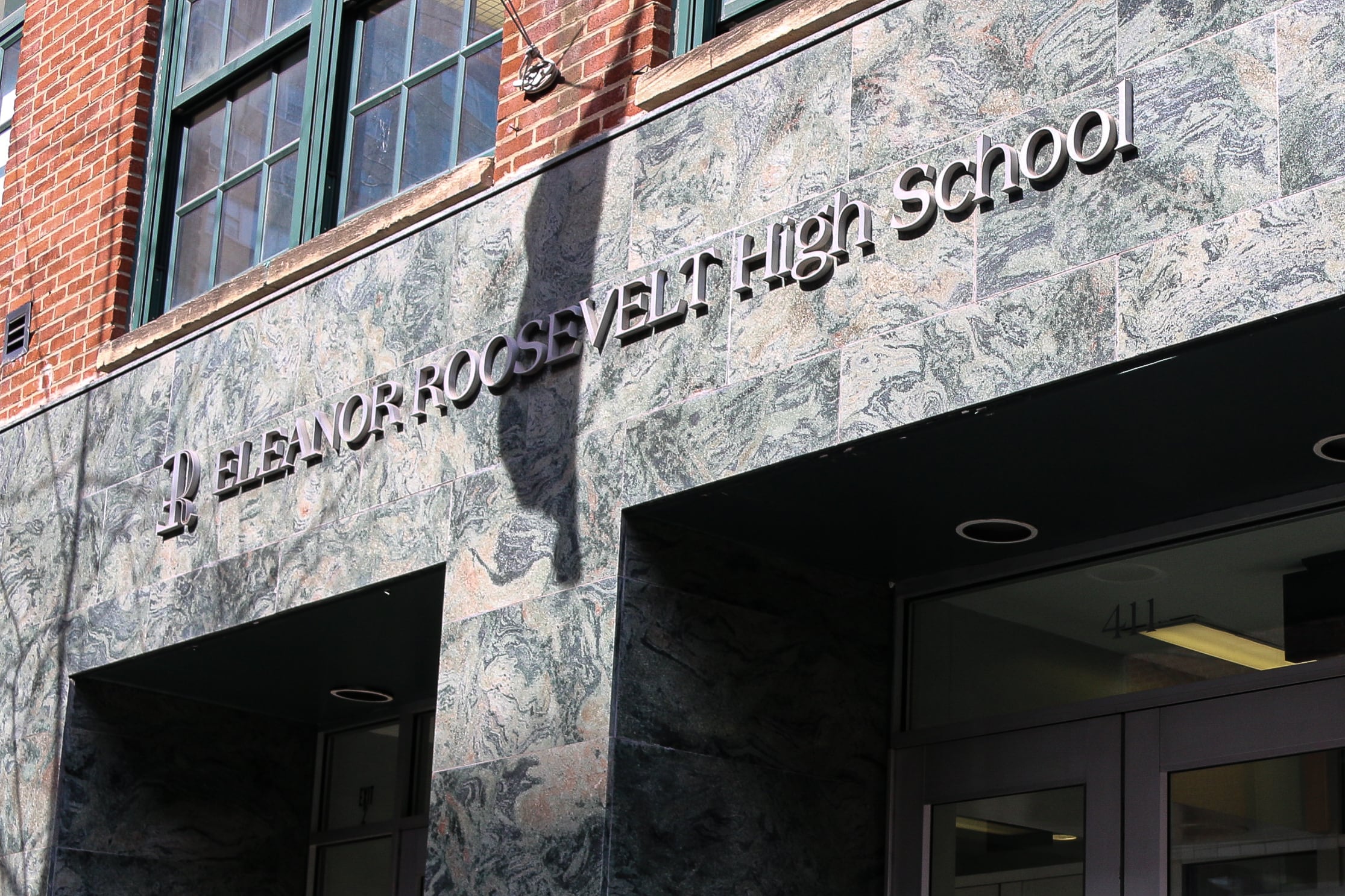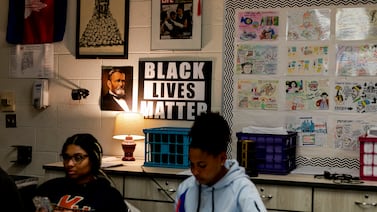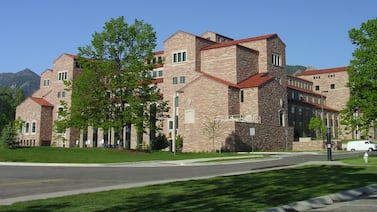Six of Manhattan’s most popular high schools will set aside 75% of their seats for students who live in the borough for the coming admissions cycle, schools Chancellor David Banks announced Thursday.
Eleanor Roosevelt High School, Millennium High School, The Clinton School, NYC Lab School for Collaborative Studies, The Museum School, and Baruch College Campus High School will all offer the borough priority, Banks said. All six schools also screen students on the basis of grades.
The policy shift comes after some Manhattan parents lobbied Banks to impose geographic admissions preferences at high-demand local high schools, arguing that competitive schools in other boroughs often give local students a leg up. Parents from District 2, which spans much of lower and midtown Manhattan and the Upper East Side, point out that their children got into their top choice schools at the lowest rate in the city last year, according to Education Department data.
But critics contend that Manhattan’s high schools are the highest-demand in the city in part because the borough is an appealing destination and transit hub for students from across the five boroughs. They say the city shouldn’t restrict access to them.
At a press conference Thursday, Banks said he believes his new policy stakes out “a reasonable middle ground” by granting some geographic priority, while still keeping the schools open to a diverse swath of students.
“Manhattan parents generally were locked out of most of the seats in these schools even though they were geographically close,” he said. “So many Manhattan kids went to schools that were a long train ride away. That doesn’t make sense to me.”
Schools previously had district preference
Most of the schools that will now offer the borough priority previously gave a leg up to students who lived in District 2 – a policy that former Mayor Bill de Blasio scrapped in 2020.
Several of those schools, including Eleanor Roosevel, Baruch, and Lab, have seen their shares of Black and Latino students, as well as those from low-income families, increase substantially since they dropped the District 2 priority and began setting aside a percentage of their seats for students from low-income families.
Schools with set-asides for students for low-income families will retain those policies, and officials said Thursday that by including the entire borough of Manhattan in the priority, rather than just students from District 2, they project that the percentage of Black and Latino students as well as those from low-income families won’t change significantly.
According to the department’s analysis, the overall percentage of Black and Latino students admitted to the six schools would stay at 26%, as would the percentage of students living in poverty, at 48%. The biggest change, according to the analysis, would come in the proportion of admitted students from Manhattan, which is projected to rise from 59% this year to 76% next year.
Principals at several of the schools now adopting Manhattan priority were vocal in their support of abandoning District 2 priority in 2020.
Patrick Sprinkle, a history teacher at NYC Lab School, said he was “disappointed” in the new decision. “I would like to see Manhattan schools open themselves to anyone who wants to attend instead of wall themselves off.”
An Education Department spokesperson said decisions about adding borough priority at the six schools were made “in tight coordination with the superintendent, principals, and with input of a wide-range of parent voice.”
Lisa Marks, the parent of a rising middle school student in District 2 who is part of a group of hundreds of parents that have been advocating for increased geographic admissions preference in Manhattan schools, said the decision was an “olive branch to Manhattan parents” and a “very positive development.”
“I think he’s clearly trying to strike a balance and address the parental feedback he heard,” she said of Banks.
She added that “only time will tell” if the changes can help lower the number of District 2 students who didn’t get into any of their 12 choices. Last year, District 2 led the city in its share of students not getting into any of their high school choices at 13%, though that number dips to 7% when accounting for students who got into specialized high schools, which use a separate admissions process, according to Education Department data.
Parents from other boroughs push back
Still, the idea of a geographic priority at some of Manhattan’s most popular high schools has stirred concerns among families of rising eighth graders in other boroughs, who say Manhattan schools are often the most accessible quality options for their kids.
Kim Gabriel, the parent of a rising eighth grader in Greenpoint, Brooklyn, noted the dearth of high schools in her neighborhood. Many of Brooklyn’s competitive high schools with geographic priority are located in southern Brooklyn and would be a far lengthier commute than schools in Manhattan, she said.
“It doesn’t make any sense to me,” she said.
The Community Education Council in District 30 in Long Island City, Queens, passed a resolution opposing borough priority at selective Manhattan high schools, noting that “because of the layout of the New York City public transportation system, many high schools in Manhattan are a shorter commute away from neighborhoods in District 30 than comparable schools in Queens.”
The resolution noted that while Queens high schools have a deficit of seats, Manhattan high schools have thousands of open seats, even if they’re not at the highest-demand schools.
Nyah Berg, the executive director of New York Appleseed, a group that advocates for school integration, called the move “unsound policy, informed by limited community engagement and an even smaller group of select voices trying to reinstate gatekeeping relics from before the pandemic.”
Officials said on Thursday they heard from a range of parents and advocates, and noted that the schools will still leave some seats open to students from other boroughs.
“This change won’t make everyone happy,” he said. “But I believe it’s the right one and that it’s responsive to parents across the city with a diverse set of opinions and perspectives.”
Banks also pointed to his efforts to open more academically screened schools in parts of the city that have historically had fewer of them, and said he hoped to challenge the notion there’s “a handful of really great high schools in Manhattan and if you don’t get into those schools you’re doomed.”
Michael Elsen-Rooney is a reporter for Chalkbeat New York, covering NYC public schools. Contact Michael at melsen-rooney@chalkbeat.org.





